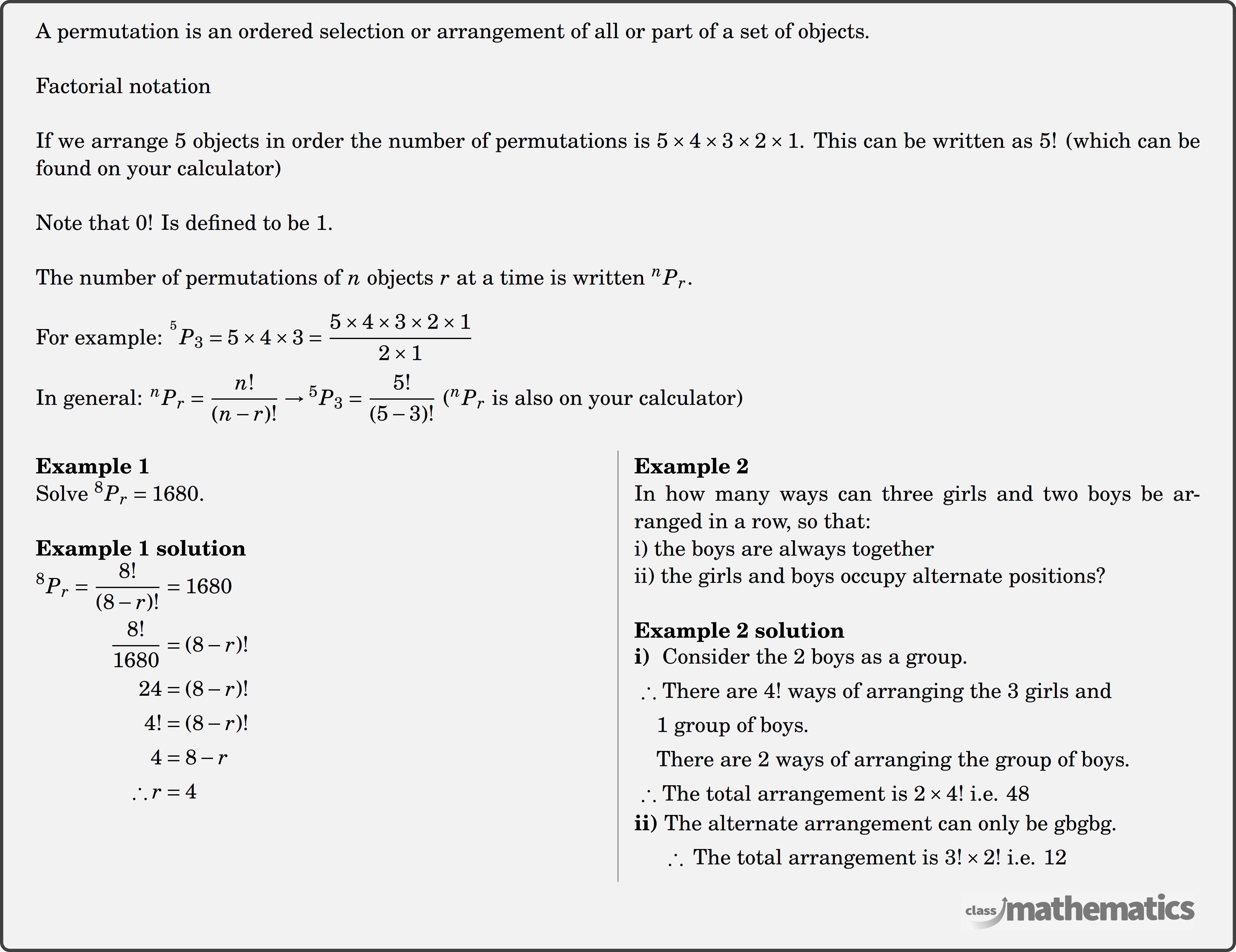Resources for Permutations
-
Questions
28
With Worked SolutionClick Here -
Video Tutorials
1
Click Here -
HSC Questions
2
With Worked SolutionClick Here
Permutations Theory

NSW Syllabus Reference
NSW Syllabus Reference: ME-A1.1: Permutations and combinations. This will require student to
- list and count the number of ways an event can occur
- use the fundamental counting principle (also known as the multiplication principle)
- use factorial notation to describe and determine the number of ways 𝑛 different items can be arranged in a line or a circle
- solve simple problems and prove results using the pigeonhole principle (ACMSM006)
- understand and use permutations to solve problems (ACMSM001)
- solve problems involving permutations and restrictions with or without repeated objects (ACMSM004)
- understand and use combinations to solve problems (ACMSM007)
- solve practical problems involving permutations and combinations, including those involving simple probability situations
